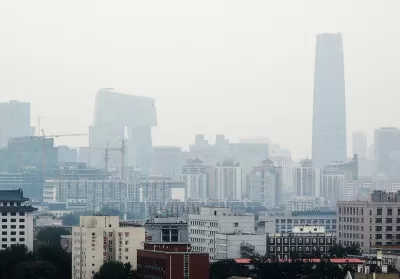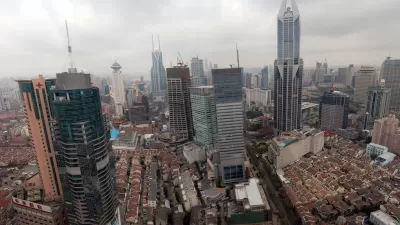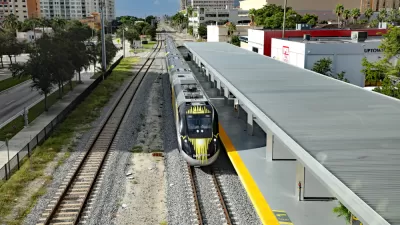China's capital city is already one of the largest in the world, but it's about to get a whole lot bigger. As the Chinese population continues to migrate from rural to urban areas, the Chinese government is planning for megacity of 130 million.

Sprawling rings of development long ago enveloped the Forbidden City, which is but a tiny nucleus in the center of greater Beijing. With the adoption of a new growth plan, the current iteration of Beijing may one day seem as tiny as the Forbidden City does today. The plan is intended to link Beijing with neighboring cities, such as Tianjin, and with its rural surroundings to not only house China's increasingly urban population but also create an integrated economic powerhouse.
Part of the plan includes the relocation of many government services into outlying areas in order to stimulate economic growth and spread the population away from the city's crowded core. Neighboring Heibei Province has few residential restrictions, meaning that it is primed for housing development. Integrating it with the capital will rely in part on new transit options.
"The new supercity is intended to be different in scope and conception. It would be spread over 82,000 square miles, about the size of Kansas, and hold a population larger than a third of the United States. And unlike metro areas that have grown up organically, Jing-Jin-Ji would be a very deliberate creation. Its centerpiece: a huge expansion of high-speed rail to bring the major cities within an hour’s commute of each other."
But, as quickly as many Chinese cities have grown, functioning urban areas are not as easy to build as skyscrapers are. China's public finance structure means, for instance, that the region may have trouble developing schools and other public services, and new cities may be forced to compete for development. Under the current tax system, poor developing cities cannot share revenue with wealthy Beijing.
"Wang Jun, a historian of Beijing’s development, said creating the new supercity would require a complete overhaul of how governments operated, including instituting property taxes and allowing local governments to keep them. Only then can these towns become more than feeders to the capital."
"Infrastructure has also lagged. Until recently, high-speed rail failed to connect many vital cities around Beijing, while many roads did not link up. Planning reports say the area has 18 “beheaded” highways — major arteries built in one of the three districts but not linked to others. One highway ends at a bridge over the mostly dried-out river dividing Yanjiao from Beijing, and has remained unfinished for years."
Then again, China has proven adept at building high-speed rail. A line from Tianjin to Beijing has cut travel time from three hours to 37 minutes.
FULL STORY: As Beijing Becomes a Supercity, the Rapid Growth Brings Pains

Planetizen Federal Action Tracker
A weekly monitor of how Trump’s orders and actions are impacting planners and planning in America.

Map: Where Senate Republicans Want to Sell Your Public Lands
For public land advocates, the Senate Republicans’ proposal to sell millions of acres of public land in the West is “the biggest fight of their careers.”

Restaurant Patios Were a Pandemic Win — Why Were They so Hard to Keep?
Social distancing requirements and changes in travel patterns prompted cities to pilot new uses for street and sidewalk space. Then it got complicated.

Platform Pilsner: Vancouver Transit Agency Releases... a Beer?
TransLink will receive a portion of every sale of the four-pack.

Toronto Weighs Cheaper Transit, Parking Hikes for Major Events
Special event rates would take effect during large festivals, sports games and concerts to ‘discourage driving, manage congestion and free up space for transit.”

Berlin to Consider Car-Free Zone Larger Than Manhattan
The area bound by the 22-mile Ringbahn would still allow 12 uses of a private automobile per year per person, and several other exemptions.
Urban Design for Planners 1: Software Tools
This six-course series explores essential urban design concepts using open source software and equips planners with the tools they need to participate fully in the urban design process.
Planning for Universal Design
Learn the tools for implementing Universal Design in planning regulations.
Heyer Gruel & Associates PA
JM Goldson LLC
Custer County Colorado
City of Camden Redevelopment Agency
City of Astoria
Transportation Research & Education Center (TREC) at Portland State University
Camden Redevelopment Agency
City of Claremont
Municipality of Princeton (NJ)




























